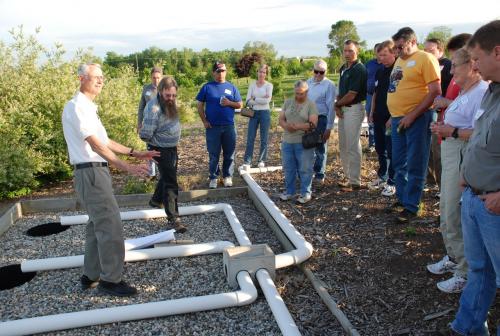Extreme care should be taken when considering what to plant over and around your septic system
Planting appropriate vegetation over the drain field is key to allowing a septic system to properly treat household wastewater and ensure the safety of your family and the environment.
A commonly-asked question regarding septic system maintenance is: “What, if anything, is appropriate to plant on or over a septic system drain field?” This is an important question as vegetation over a drain field is critically necessary for the system to efficiently process wastewater without harming human health or the environment.
Vegetation over a drain field is critical for many reasons:
- Plants absorb excess moisture and nutrients from the soil through a process known as transpiration (the loss of water from a plant). This allows the drain field to process wastewater more efficiently and effectively.
- Plant roots anchor soil in place; preventing erosion from the drain field into nearby waterways can lead to excess plant growth and reduced water clarity among other issues.
Careful plant selection is advised for the area near a septic system, particularly over the drain field. In general, herbaceous (non-woody), shallow-rooted species that are adapted to normal rainfall amounts for your area are best because they won’t clog or disrupt the drain field pipes. These many include flowering annuals and perennials, including bulbs, turf grass and many groundcovers. Note that some larger species of these plants may have extensive root systems that pose some risk to the drain field. In addition, though annuals provide benefits to a septic system during the growing season, they may be limited in their ability to stabilize soil before and after the growing season.

Photo: MSU Professor Emeritus Ted Loudon discusses planting over the drain field.
Kentucky Bluegrass, a common turf grass species in many Michigan lawns, may not seem to be a good choice for absorbing soil moisture and prevent erosion due to its shallow root system. However, it may be the most cost-effective and readily available plant material to use, and one that will not damage the drain field.
Trees, shrubs and other plants with deeper, more extensive root systems are not recommended for areas near septic systems because of their potential for damaging drain field pipes. In fact, these plants should be planted as far away from the drain field as possible. For example, willows, with their prolific root systems, should be kept away from drain fields entirely. In general, landscapers must consider the size of the root zone of the mature tree and shrub before planting anything near a septic system.
While vegetables might seem like plants that have appropriate root systems for a drain field, vegetable gardening directly over a drain field is not recommended due to the possibility of bacterial and/or viral contamination from the septic effluent. Gardening in raised beds over a drain field isn’t recommended either because the weight of the planters may compact the soil over the drain field. This would reduce the drain field’s ability to process wastewater properly and increase the likelihood of groundwater or surface water contamination. Siting vegetable gardens as far from septic systems as possible is recommended.
As a famous author once said, “The grass is always greener over the septic system.” For the protection of your family and the environment, planting and maintaining turf grass over your drain field is recommended.
For more information on maintaining household septic systems, see the Michigan State University Extension three-part series of articles:



 Print
Print Email
Email




